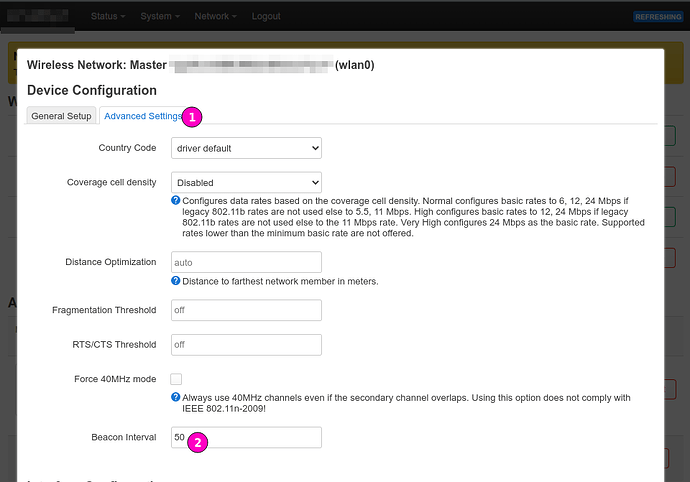At some point I started to experiment strange wifi disconnects, and I think I fixed changing the wifi beacon interval.
I found the, still hot, bug report in linux kernel: iwlwifi: 8260: frequently disconnects since Linux 5.1 "No beacon heard and the time event is over already" - WIFI-25906, which is also referenced in freebsd wiki too
OpenWrt is mentioned in that bug report, because they say that the problem could be fixed from the AP side (and OpenWrt facilitates on that). Someone says in the bug report:
I'll try to provide firmware logs later, but for now I've found that changing "Beacon Interval" from the default 100 ms to 50 ms on my OpenWrt AP fixes the problem. Perhaps this information is useful.
Nobody complains anymore about this, the discussion is more focused now on wether we should fix it or not in the client side when you cannot change the AP.
I tried to change it (see appendix on how), and it is working good since I changed it on 2023-04-17 (1 week and 1 day ago). I don't know if start saying to people that they should change that beacon interval one by one, or just proposing this option as a default one.
Then, can we change the beacon interval from 100 ms to 50 ms? I think it will improve users connecting to the AP without having to look into the details.
Related
- [1] in fact, I am using (now and usually) a xiaomi router, and one week and a half with this change and I don't have more disconnects, it might help (?) 21.02 rc4: mt7530 mdio-bus:1f lan1: Link is Down, Link is Up
- [2] they complain about the problem, Wifi connectivity issues with ath10k
Appendix: how to change wifi beacon interval from 100 ms to 50 ms
uci set wireless.radio0.beacon_int='50'
uci set wireless.radio1.beacon_int='50'
commit
In the web interface it is around 6 clicks:
And then scroll down to save and then save and apply

